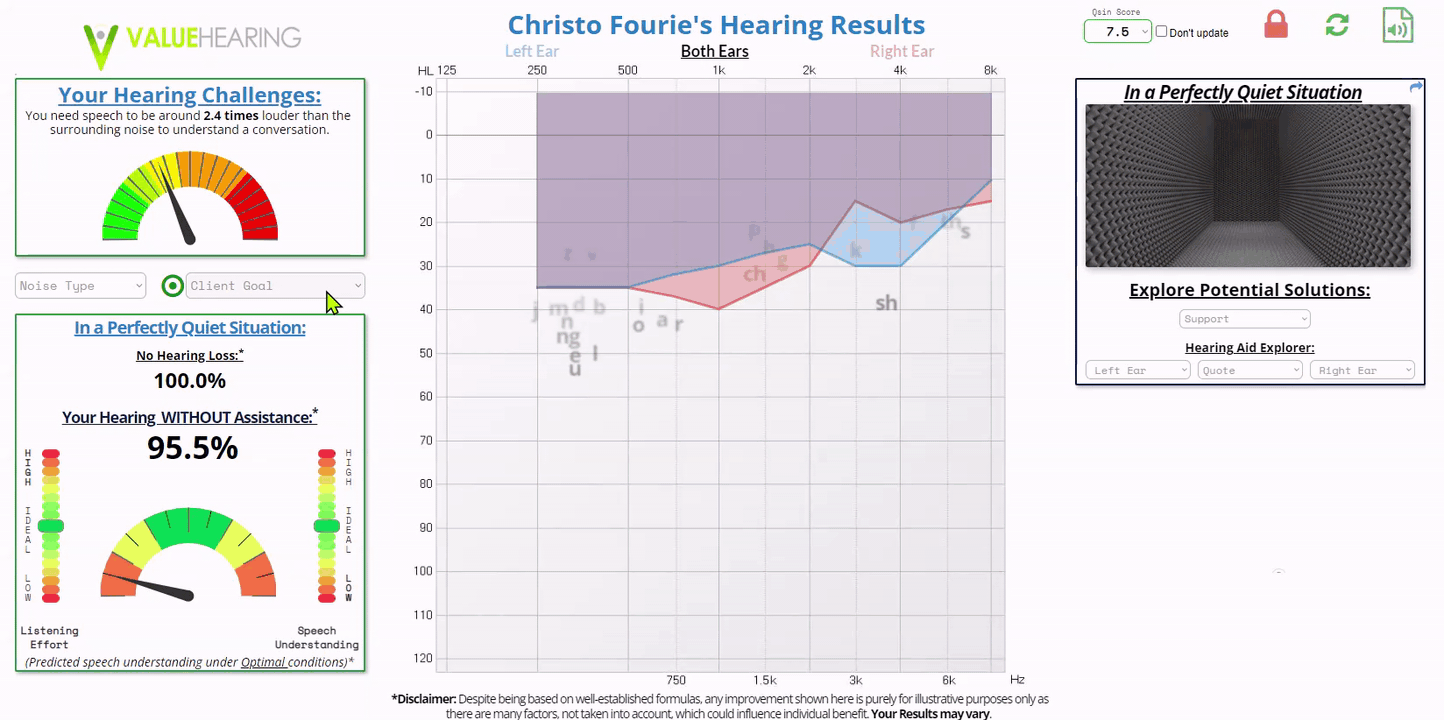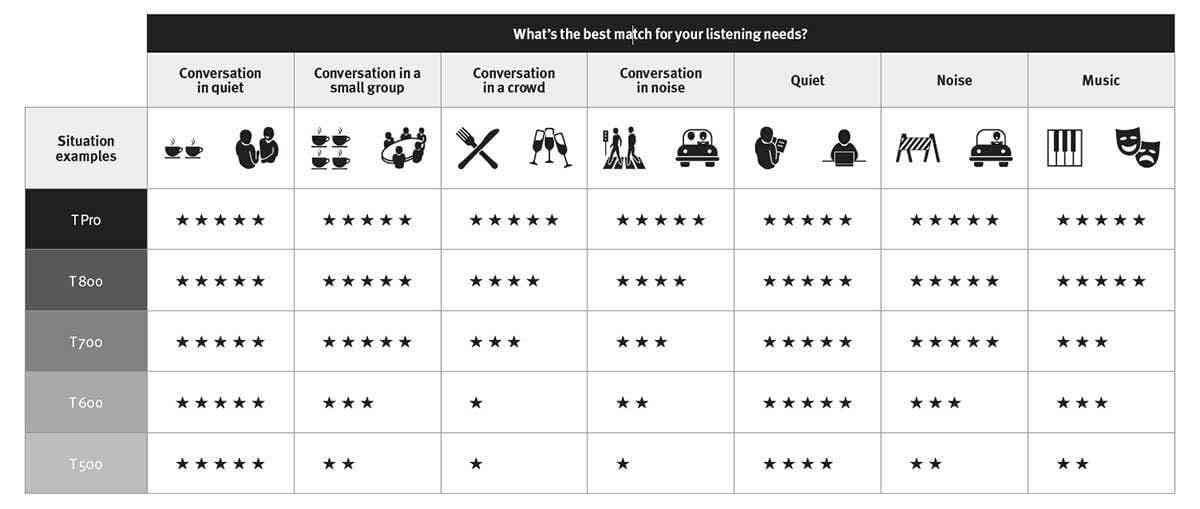The internet is full of articles detailing how to choose a hearing aid for you.
They all pretty much describe the same way to select a hearing aid with some offering more details than others.
Typical hearing aid selection considerations include:
- The Hearing Aid Style
- The level and type of your hearing loss
- The hearing aid’s features
- The price of the hearing aid
- Your lifestyle requirements
- Trial your selection and try again if it doesn’t work out.
In the end, they all recommend that you see your hearing care professional for guidance. This is indeed good advice, because choosing the right hearing aid using the industry-standard method is very difficult, even for a professional with decades of experience.
This same methodology has been in use and largely unchanged for at least the last 20 years or more, despite the industry and technology seeing many changes over that time. We have also seen significant research findings in acoustics, hearing, and hearing aids over this time, but very little of this has found its way into the standard hearing aid selection process.
Most of the changes and improvements are expected to be accounted for in a clinician’s head when they make their recommendations. Unfortunately, this is almost impossible to do as so many variables interact with each other in interesting ways, that are impossible to intuit. This also creates significant variability between clinical recommendations depending on the preferences, experience, work setting, and other factors related to the hearing care professional you end up with.
Having worked as an Audiologist for over 20 years, I personally used this approach in my earlier years until I stumbled upon a more effective method in 2009.
When improving on anything in life, it is never a matter of throwing out everything you know just to start afresh. We tend to build on the shoulders of giants, improving upon what is working and adding new things which make everything a bit, or a lot, better.
This is exactly what I did when developing Value Hearing’s proprietary technology called CogniMatch. CogniMatch is a modern method of selecting the best hearing aid on an individual basis for a specific client, with a unique hearing loss and unique hearing needs.
The Good and bad of the traditional hearing aid selection method
I certainly do not wish to bad-mouth the traditional method of selecting hearing aids. Without it, the choice of the right hearing aid out of the hundreds available to you would have been even more complex and confusing.
I feel that most steps in the traditional method are still valid and relevant, but the methodology has some distinct shortcomings in my opinion:
- Much of the choice relies on the clinician’s experience. You may end up with a great clinician or not. One would expect a more experienced clinician to make better recommendations than a less experienced one.
- It is very much based on averages, rather than individual client aspects, leading to potentially average outcomes.
- It requires trial and error to find the “right” hearing aid. This is time-consuming, and confusing and tends to leave the responsibility of a poorly chosen hearing aid with the client, not the expert.
- It tends to create unrealistic expectations. Hearing aid marketing tends to focus on the positives, rather than the negatives. So a client purchasing a hearing aid that is supposed to work well in noise (on average) would expect it to work well for them (despite their situation and hearing not being average).
- Clinicians are often confused as to why a hearing aid that appears to be a great match for a client ends up not working well. I would argue that this is due to the use of broad and average performance expectations, even when client- and product-specific information is available.
- It does not provide any predictions of client outcomes with the chosen solution. Instead, the client has to simply try the solution, while everyone hopes they like it. You might see that I passionately dislike trials. We have an earlier article, explaining why we feel trials don’t really serve clients well if you’re interested.
- It tends to result in the most expensive solutions being recommended if you, the client, have any social life at all.
- It does not consider granular performance differences between different brands, models, setups, hearing losses, and client needs.
- It is stagnant and does not improve over time, despite more research and data being widely available.
- It is not a process that actively empowers the client or the clinician. Instead, it seems to often leave the client confused and uncertain about the important choices they need to make.
What are your alternatives?
There does not seem to be any widely available alternative to this less-than-perfect status quo available. That is why I set out to create a process that brings hearing aid selection in line with modern technological advancements.
Cognimatch computer-based modeling is an innovative, novel, and bespoke approach to hearing aid selection, that delivers a prediction of how any particular hearing aid will work for you, in situations that are important for you to communicate. This prediction provides you with the percentage of speech you are likely to understand in specific situations with specific solutions before you even put a hearing aid on your ears. It has been developed and improved over many years to be the product it is today.
Like a weather prediction, it takes data from various research over the decades and combines them in a computer model to calculate your predicted performance with specific hearing aids with a higher level of accuracy than has been available to date.
As with a weather forecast, it can give you a great idea of what to expect, but it might not always perfectly predict real life as there are always variables that have an influence on the situation, which are not incorporated into the mathematical model.
Cognimatch is great for comparing solutions to each other relative to your hearing loss and hearing needs. This makes it great for selecting your best option out of the hundreds of options available to you.

Factors that Cognimatch takes into account for the modeling of hearing aid performance specific person:
Personal Factors:
- Your audiogram - your hearing sensitivity in both ears at different frequencies as determined by your hearing test results
- Your maximum speech understanding in quiet as obtained via speech audiometry testing
- Your signal-to-noise ratio hearing loss - how much louder do you need speech to be compared to background chatter in order to understand speech in noise?
- The articulation index - what percentage of speech is audible to you based on your hearing loss, the noise level, and your signal-to-noise hearing loss.
- Speech intelligibility index - based on the sounds that are audible to you (Articulation Index), how much speech can you understand depending on all the other variables combined?
- Binaural redundancy - when we are able to hear with both ears, the brain has additional information to help separate speech from noise and to help with general speech understanding.
Environmental Factors are taken into account:
- Noise types - the system uses a number of different situation types as templates for the distribution of noise levels over frequencies relative to your hearing loss.
- The number of people in the group - with more people chatting in a group, the louder the noise level becomes. The system calculates these changes depending on the number of people in a given group.
- Lombard effect - as noise level increases, we automatically raise our voices at a calculable rate.
- Distance from the person speaking - as we move further away from the person talking, their speech reaches us at a softer level. Similarly, if they move closer, we can hear them louder.
- Speech level - are they whispering, speaking normally, or shouting at you?
- Visual cues - how clearly you can see someone’s face can impact your ability to understand speech in noise quite noticeably. The system takes into account how visible the person’s face is to you.
Hearing Aid Factors are taken into account:
- Technology level - how effectively the various features in a hearing aid work together
- Microphone type used - hearing aid microphone technology helps separate speech from background noise. Some types of microphone types work better than others in specific situations.
- Hearing Aid Style - where the hearing aid sits on or in your ear impacts its performance characteristics.
- Venting used - hearing aid venting allows your own voice to sound normal to you when speaking while allowing enough sound to be delivered to your ear to help with hearing. Without venting you might feel like you have a bad cold when speaking. Too much venting could mean too much sound leaking out from the hearing aid, affecting performance.
- Adaptation Level - when hearing aids are set up for a new user, many clinicians, including ourselves prefer to wean you into the full prescription. This makes it easier to get used to the hearing aid early on, but also affects initial performance. The system estimates how these settings will affect your hearing ability.
- Noise reduction technology used - there is quite a bit of difference between different hearing aids’ capability to reduce background noise electronically. The system takes these product-based differences into account.
- One vs two hearing aids and to which ear it has been fitted - the model considers how things might be influenced by wearing one or two hearing aids as well as which specific ear has been fitted.
- The Impact of features and accessories such as direct streaming and FM systems can be used to enhance performance in specific settings.
- Hearing aid Program settings - how hearing aids react differently depending on the setting you are using.
- How much gain the hearing aid will apply per frequency depending on your hearing loss (NAL RP) - i.e. how hearing aid volume adjustments are shaped relative to your hearing test results.
The system does not look at each factor on its own but instead combines them dynamically to deliver 3 predictions:
- How well someone with perfect hearing might be able to understand speech in that situation.
- How well you might currently understand speech in specific situations without the use of hearing aids.
- How well, as long as everything is optimal, you are likely to understand speech in a particular situation using a particular solution.
Cognimatch also allows your clinician to compare various hearing aid models against your unique situation, giving you and your clinician clear insights into which technology would suit you best. You can then proceed to be fitted with the solution in order to evaluate it in real life.
Assumptions with the modeling:
- You are using the solution optimally - e.g. you are positioned optimally in the environment
- You have selected the correct hearing aid mode or program
- The Hearing Aid has been optimally fitted using real ear measurements
- The situation remains fairly stable
- The hearing aids are clean and working
- You always try to keep noise to your back
- You are feeling fresh and awake
- The venting selected by the clinician accurately matches the venting selected in the modeling
Some of the factors that are not currently taken into account:
- Depth of insertion of the hearing aid
- Ear canal size and shape
- Fitting rationales outside of NAL RP
- Frequency lowering
- Hearing aid features not listed above
- Hearing aid Maximum Power Output
- Compression
- Loudness tolerance of the user
- The presence of wind noise in the situation
- The acoustic characteristics of the environment you find yourself in
The system is constantly improving
CogniMatch is not a static system. It has been designed to improve, like a great wine, over time.
The modeling is continually being tweaked to deliver ever-improving accuracy in predictions, but incorporating more factors as research and formulas become available and are integrated into the model.
CogniMatch has been designed to benefit from Machine Learning in the future once sufficient anonymised data has been collected. This should improve the accuracy of its predictions as it compares predictions vs actual results and learns from those over time.
Conclusion:
No computer model is likely to predict real-life outcomes with 100% precision. A modeling approach to hearing aid selection does however offers several advantages over the stagnant traditional method. It essentially overcomes many of the limitations associated with the traditional hearing aid selection process, making it an empowering tool for both the hearing aid user and the hearing care professional.
Where to get your Cognimatch Analysis?
CogniMatch is a proprietary technology developed for Value Hearing. We do plan to release a version specifically for other providers later in 2023.
Until such a time, it is only available at any of the 9 national Value Hearing clinics in Australia.
It forms part of our normal hearing aid assessment, which is available to pensioners as well as self-funded clients.
We are currently offering our comprehensive Hearing Aid Assessment, including Cognimatch at no charge until the end of January 2023 (Normally $89).
So book now to avoid disappointment.

